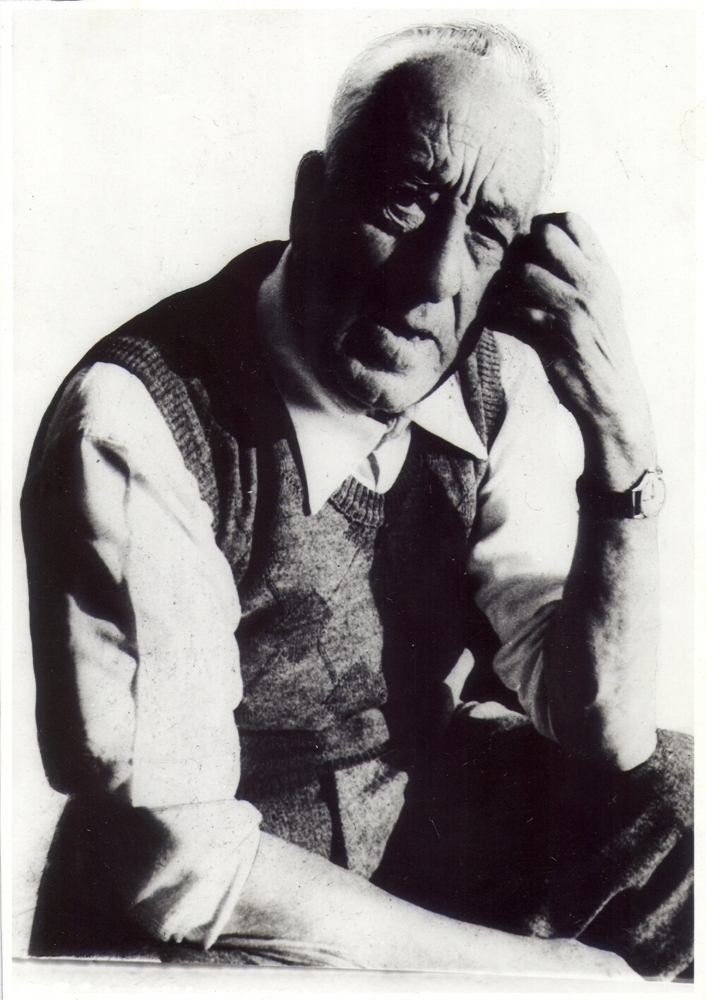Henry van de Velde
The Boekentoren is late style. It is the work of an architect who, at the end of his career, used his mastery for a monumental finale. Van de Velde had realised important art buildings abroad with the Werkbund Theater (1914) in Cologne, the Kröller-Müller Museum (1923-1938) in Otterlo and the Folkwang Museum in Hagen (1899-1902). The Boekentoren is his Belgian landmark.
Henry van de Velde was born in Antwerp in 1863. He was a painter, designer and architect who enchanted the international art scene with his work from the 1890s. Interiors in ornate Art Nouveau style characterise his early oeuvre. Between 1902 and 1917 he worked in Weimar, where his style gained strength and simplicity and where he realised his most famous designs: the Nietzsche Archiv, Villa Esche, Villa Koerner, Hohe Pappeln and Hohenhof, which he designed for his first biographer Karl Ernst Osthaus. It has been said that van de Velde was a socially committed artist, but that he made his talent available to a small elite of patrons and industrialists.
Art education was close to his heart. Van de Velde participated in the artistic culture of his time, gave lectures and published extensively; he was called the apostle of the modern style. His book design was published by Cranach Press, Harry Kessler’s private press, and was commissioned by Anton Kippenberg’s Insel Verlag. He found applications for his style in textiles, metal, porcelain, wood and ceramics. He made porcelain for Villeroy & Boch, iconic furniture such as the Seccession (a desk) and the Bloemenwerf chair, as well as personalised rings for his customers or a 353-piece service for the Grand Duke of Weimar. In his twenties, he was a member of Les Vingt and painted using neo-impressionist techniques. Anyone who looks at van de Velde’s ornate Art Nouveau tableware should know that he was able to paint such canvases as Winterzon (1892) and that Georges Seurat and Vincent van Gogh were among his greatest teachers – he had learned the game of line and colour from them.
The Boekentoren stands out among that expansive oeuvre of objects and buildings. In 1926 van de Velde had returned from Germany. He exchanged the Kunstgewerbeschule in Weimar, the predecessor of the Bauhaus, for a teaching position at the Ghent University Higher Institute for Art History and Archaeology and La Cambre in Brussels. On a recording from 1936, he can be heard as a teacher – in Dutch, like the cosmopolitan he was. Construction of the university library had meanwhile started. Conceived as a Gesamtkunstwerk, like his private home Bloemenwerf, which formed a stylistic unit up to and including Maria Sèthe’s dress, it demanded a lot from the architect; never did the building reach perfection.
In 1947 van de Velde withdrew to Switzerland. New students found their way to Oberägeri, including the Finnish architect Alvar Alto, who saw in him a living piece of architectural history, the last of the nineteenth-century pioneers. Van de Velde died in Zurich in 1957.

Henry van de Velde
